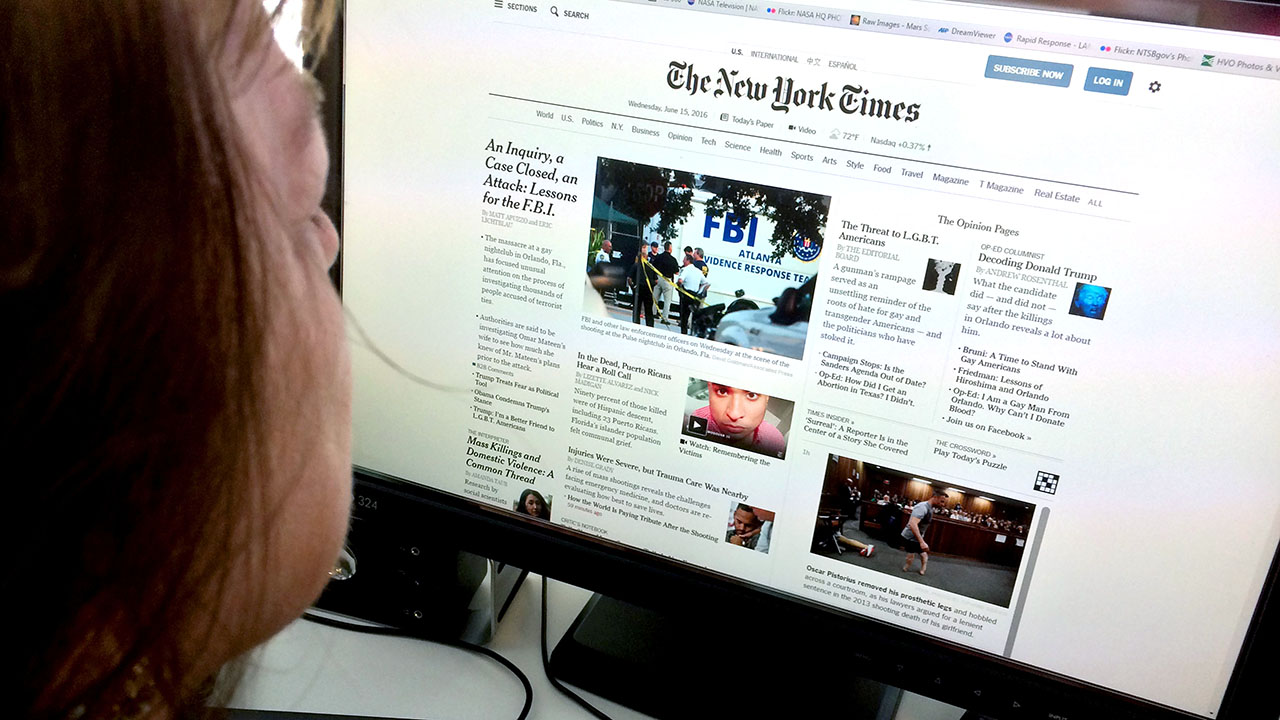News Channels Fundamentals Explained
News Channels Fundamentals Explained
Blog Article
The Of News Channels
Table of ContentsRumored Buzz on News ChannelsExcitement About News ChannelsRumored Buzz on News ChannelsIndicators on News Channels You Should Know
Moving information channels transmitted information web content 24 hours a day. The advent of the net has actually enabled the regular 24-hour-a-day discussion of lots of video and audio information records, which are updated when additional details becomes readily available; lots of television broadcasters give content originally offered on-air as well as unique or additional information web content on their sites.Stations that make use of a "wheel" format tend to maintain to a set schedule of specific programs at certain specific minutes on the hour, and one of these sections is regularly a news flash. These brief publications will certainly supply summaries of any breaking news of passion, and might include regional issues such as weather prediction or traffic reports.

Information broadcasts in the United States were initially sent over the radio. NBC started programs in November 1926, with CBS going into production on September 25, 1927. Both at first reviewed similar topics, such as election outcomes, governmental launches, and other matters of issue to the basic public. Nevertheless, NBC soon became the dominant force for amusement talent.
All About News Channels
A basic change gradually took place in the design of the night broadcasts in most countries. In the 1950s, television was novel enough that it was thought about amusement. In the 1960s and 70s, television newscasts had a tendency to be unusually "significant" by later requirements, including even more "hard news" and less light home entertainment mixed in.

From 2000 to 2010, total viewership of tv broadcast information proceeded to decline. Some news-adjacent cable programs got fame and success in this period (such as the comedy-focused and the commentary-focused ). Their gains did not balance out the continuing high decline in viewership of mainline network find here information.
The 6-Minute Rule for News Channels
newscasts on other terminals. The National, which has broadcast on CBC Television given that 1954, is the longest-running nationwide network broadcast in Canada. All three networks additionally produce once a week newsmagazines: CBC's (aired given that 1975), Global's (aired considering that 2008), and CTV's (broadcast given that 1966 and currently the longest-running network newsmagazine in Canada). [] CTV's is the sole national morning information program on broadcast tv in Canada, and changed, which aired because 1975.
Local Television stations in the United States normally transmitted local information 3 to four times a day on average: commonly airing at 4:30, 5:00, 5:30, or 6:00 a.m.; noon; 5:00 and 6:00 p.m. in the very early night; and 10:00 or 11:00 p.m. Stations that generate local broadcasts commonly transmit as little as one to as much over twelve hours of neighborhood news on weekdays and as little as one hour to as much as seven hours on weekend breaks; news programs on weekend breaks are normally limited to morning and night broadcasts as the variable scheduling of network sporting activities programming (if a station is connected with a network with a sports department) usually important source avoids most stations from lugging midday newscasts (however a couple of terminals found in the Eastern and Pacific time zones do create weekend break midday newscasts). From the 1940s to the 1960s, program television stations commonly provided local information programs just one to 2 times each night for 15 minutes (the typical length for lots of locally produced programs at the time); usually these programs aired as supplements to network-supplied evening news programs or leadouts for primetime shows.
About News Channels
In instances where a terminal with an existing news department gets in into an information share contract, it will result either the 2 departments merging or the straight-out conversion of newscast manufacturing from in-house to outsourced manufacturing.
These names are planned to set one terminal besides the rest, specifically for customers who are chosen for target market dimension surveys. If the participant was not able to provide a network number or call letters, the newscast title is usually adequate for the appropriate terminal to obtain Nielsen rankings credit history. [] The Big Three broadcast television networks generate early morning and night national broadcasts.
Report this page